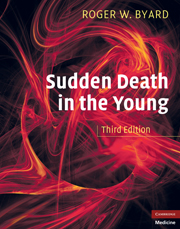Book contents
- Frontmatter
- Contents
- Preface to the third edition
- Reviews of the first and second editions
- Acknowledgments
- Section 1 Introduction
- Section 2 Unintentional trauma
- Section 3 International trauma
- Section 4 Natural disease
- Section 5 Maternal, fetal, and neonatal conditions
- Section 6 Sudden infant death syndrome
- 14 Sudden infant death syndrome
- Appendices
- Index
14 - Sudden infant death syndrome
from Section 6 - Sudden infant death syndrome
Published online by Cambridge University Press: 05 January 2013
- Frontmatter
- Contents
- Preface to the third edition
- Reviews of the first and second editions
- Acknowledgments
- Section 1 Introduction
- Section 2 Unintentional trauma
- Section 3 International trauma
- Section 4 Natural disease
- Section 5 Maternal, fetal, and neonatal conditions
- Section 6 Sudden infant death syndrome
- 14 Sudden infant death syndrome
- Appendices
- Index
Summary
Introduction and historical background
Sudden infant death syndrome (SIDS), cot or crib death is the term used when a previously well infant is found unexpectedly dead after sleeping, with no cause for the death being established. Since the first edition of this text, there have been dramatic changes in the profile of these cases. Following the identification of specific environmental risk factors, community awareness campaigns were undertaken that resulted in deaths from SIDS falling precipitously in many communities. For example, the number of SIDS deaths per year in California, United States, fell from 110.5 per 100,000 live births in 1990 to 47.2 per 100,000 live births in 1998, and the number of SIDS deaths nationally in Australia fell from over 500 per year in 1988 to just 134 per year in 1999. In Australia this corresponded to a decrease from an average of 196 SIDS deaths per 100,000 live births in the 1980s, to 52 deaths per 100,000 live births in the period 1997–2002.
Research has clarified possible mechanisms of death, with the “triple risk” or “fatal triangle” models being proposed to integrate complex individual susceptibilities with developmental stages and environmental factors (Figure 14.1).
- Type
- Chapter
- Information
- Sudden Death in the Young , pp. 555 - 630Publisher: Cambridge University PressPrint publication year: 2010
- 5
- Cited by



